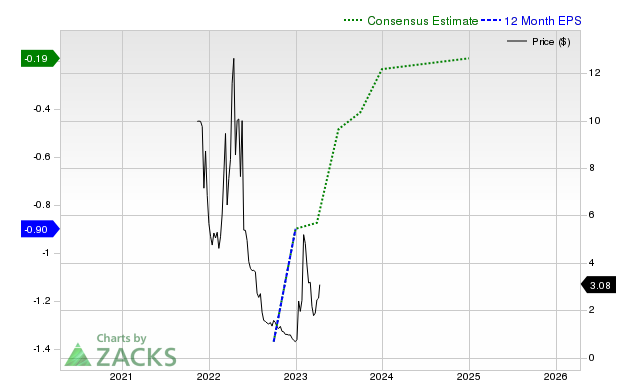The Sound Perimeter Effect: Music And Collective Identity

Table of Contents
Music as a Foundation for Shared Identity
Music acts as a fundamental building block of shared identity, fostering a sense of unity and belonging among individuals. This unifying power stems from the deeply emotional and social nature of musical experiences.
Shared Musical Experiences and Bonding
Shared musical tastes form the bedrock of social bonding. Think about the exhilaration of attending a live concert with friends, the intimate connection of sharing headphones and a favorite playlist, or the collaborative joy of playing music in a band. These shared experiences aren't just fun; they forge powerful emotional connections. The release of endorphins during musical experiences, coupled with feelings of shared emotion and synchronized movement, create a powerful sense of group cohesion.
- Shared musical experiences: Attending concerts, festivals, karaoke nights, or simply listening to music together strengthens interpersonal bonds.
- Social bonding: Music provides a common ground, facilitating communication and understanding between people.
- Emotional connection: Shared musical taste allows for the expression and validation of emotions, leading to deeper connections.
- Group cohesion: Participating in musical activities strengthens group dynamics and improves teamwork.
Music as a Symbol of Group Membership
Certain genres and artists become potent symbols of group membership, acting as cultural markers that define and reinforce subcultural identities. Punk rock, with its rebellious spirit, became a powerful symbol of counter-culture movements. Similarly, hip-hop music has deep roots in urban communities, reflecting their experiences and perspectives. Country music often resonates with rural populations, mirroring their values and lifestyle. These associations aren't accidental; they actively shape group identity and create boundaries between different groups.
- Group symbols: Musical genres and artists become visual representations of group affiliation.
- Cultural markers: Music acts as a visible marker for understanding cultural differences and shared experiences.
- Subcultural identity: Specific musical tastes define and solidify subcultures, helping members identify with each other and maintain their identity.
- Musical taste as identity: Our musical preferences often communicate our beliefs, values and identities to others.
The Sound Perimeter Effect in Action
The "sound perimeter effect" isn't just about creating a sense of belonging; it also establishes boundaries and can even lead to conflict.
Defining Boundaries and Exclusion
The shared musical preferences that define a group's "sound perimeter" can simultaneously exclude those outside it. This can lead to social exclusion, creating in-group/out-group dynamics and even musical prejudice. Disagreements over musical taste, or the appropriation of musical styles by dominant groups, can intensify social divisions and escalate into conflict.
- Social exclusion: Individuals who don't share the group's musical preferences might feel excluded or alienated.
- In-group/out-group dynamics: The "sound perimeter" creates an us-vs-them mentality, potentially fueling prejudice and conflict.
- Musical prejudice: Negative judgments are often made towards those whose music preferences differ from one's own.
- Cultural conflict: Disputes over musical styles or their appropriation can have significant cultural consequences.
Reinforcing Group Cohesion and Solidarity
Conversely, shared musical experiences can powerfully reinforce group cohesion and solidarity. Music plays a vital role in social movements, protests, and community building. Anthems and protest songs provide a unifying voice for social change, fostering a sense of collective action and shared purpose. Community choirs and musical events can strengthen local bonds, promoting a sense of place and collective identity.
- Group solidarity: Music unites individuals around a shared cause, increasing their sense of unity and solidarity.
- Collective action: Music mobilizes individuals towards collective goals, stimulating social action and change.
- Social movements: Music has been instrumental in driving social and political change throughout history.
- Community building: Shared musical activities can foster stronger local connections, creating a sense of community.
The Sound Perimeter Effect Across Cultures and Generations
The power of music to shape collective identity transcends geographical and generational boundaries.
Cross-Cultural Comparisons
Across cultures, music plays a vital role in shaping and reinforcing collective identity, although the specific genres and styles vary greatly. From the traditional folk music of rural communities to the vibrant urban soundscapes of global cities, music provides a platform for cultural expression and identity formation. Studying these variations through ethnomusicology offers rich insights into the universality and diversity of the "sound perimeter effect."
- Cross-cultural music: Music from various cultures showcase the universal nature of musical expression and identity.
- Global music: The growing globalization of music has led to interesting new hybrid musical forms and identities.
- Cultural diversity: Music reflects and reinforces the unique identities of various cultures.
- Ethnomusicology: This field of study explores the social and cultural contexts of music around the world.
Music and Generational Identity
Music also serves as a powerful marker of generational identity. Shared musical tastes connect individuals who have experienced similar historical events, social trends, and technological changes. This shared musical landscape creates a sense of shared history and experience. However, these generational musical preferences can also lead to generational gaps and conflicts, highlighting the dynamic nature of the sound perimeter effect.
- Generational identity: Music can act as a symbol of a particular generation's cultural identity and life experiences.
- Youth culture: Music often plays a significant role in defining and shaping youth culture.
- Musical nostalgia: Music evokes powerful memories and associations, strengthening generational bonds through shared nostalgia.
- Intergenerational communication: Musical preferences can help us understand and bridge generational divides.
Conclusion
In conclusion, the "sound perimeter effect" illuminates the profound influence music has on shaping and reinforcing collective identity. Through shared musical experiences, music acts as a potent symbol of group membership, creating boundaries, fostering solidarity, and reflecting cultural diversity across generations. Understanding this "sound perimeter effect" helps us appreciate the crucial role music plays in our lives, from personal connections to broader social and cultural dynamics. We are encouraged to think critically about the music that surrounds us and how it contributes to our sense of belonging and the creation of our own unique collective identities. What is the "sound perimeter" of your own community, and how does music shape your sense of belonging? Further exploration of music's role in shaping collective identities warrants deeper research and open discussion.

Featured Posts
-
 Liverpools Resurgence Analyzing The Klopp Eras Impact
May 21, 2025
Liverpools Resurgence Analyzing The Klopp Eras Impact
May 21, 2025 -
 The Goldbergs A Nostalgic Look Back At 1980s Family Life
May 21, 2025
The Goldbergs A Nostalgic Look Back At 1980s Family Life
May 21, 2025 -
 Investing In Big Bear Ai What You Need To Know Before You Buy
May 21, 2025
Investing In Big Bear Ai What You Need To Know Before You Buy
May 21, 2025 -
 Securities Lawsuit Filed Against Big Bear Ai Holdings Inc
May 21, 2025
Securities Lawsuit Filed Against Big Bear Ai Holdings Inc
May 21, 2025 -
 96
May 21, 2025
96
May 21, 2025
